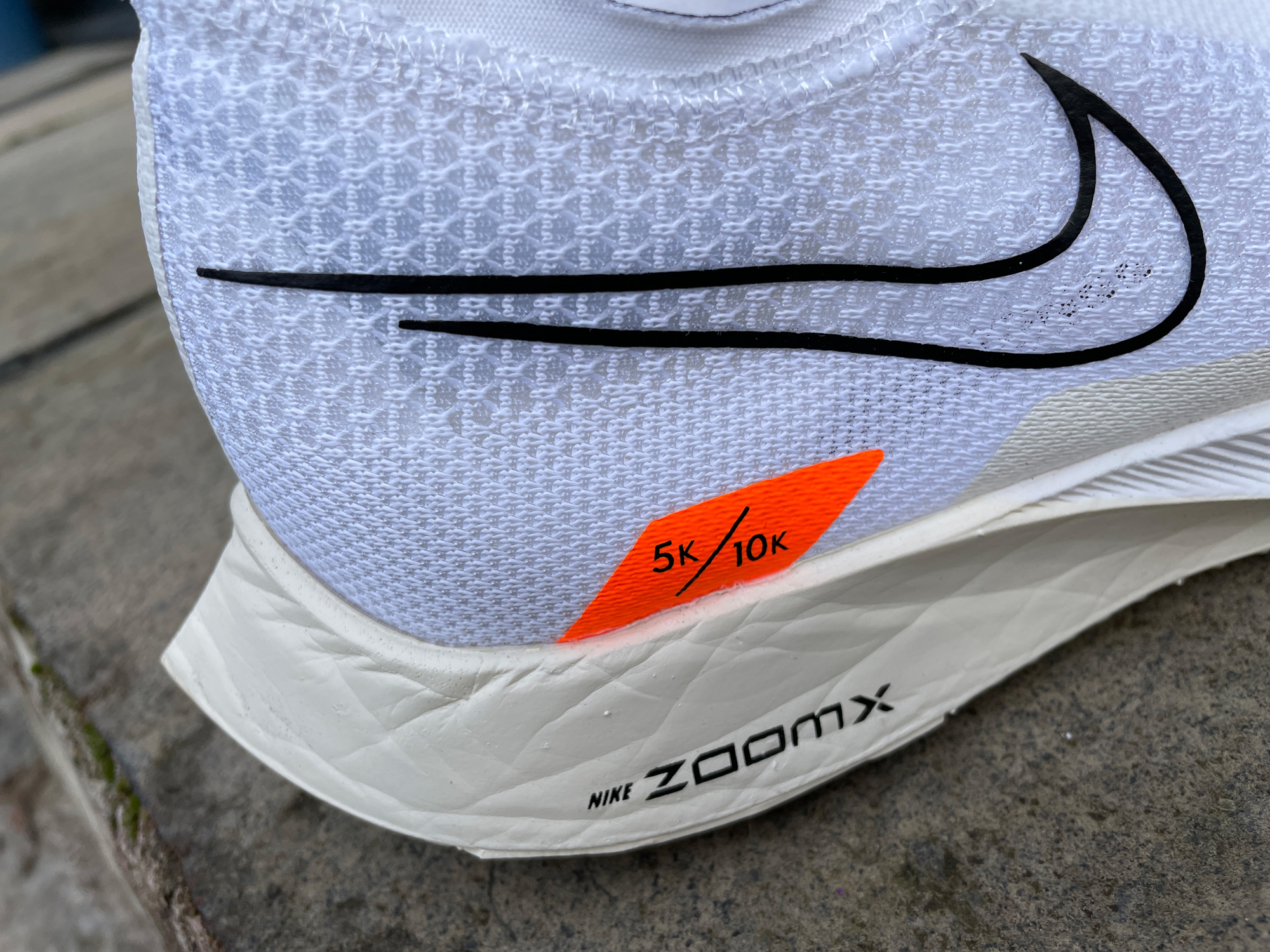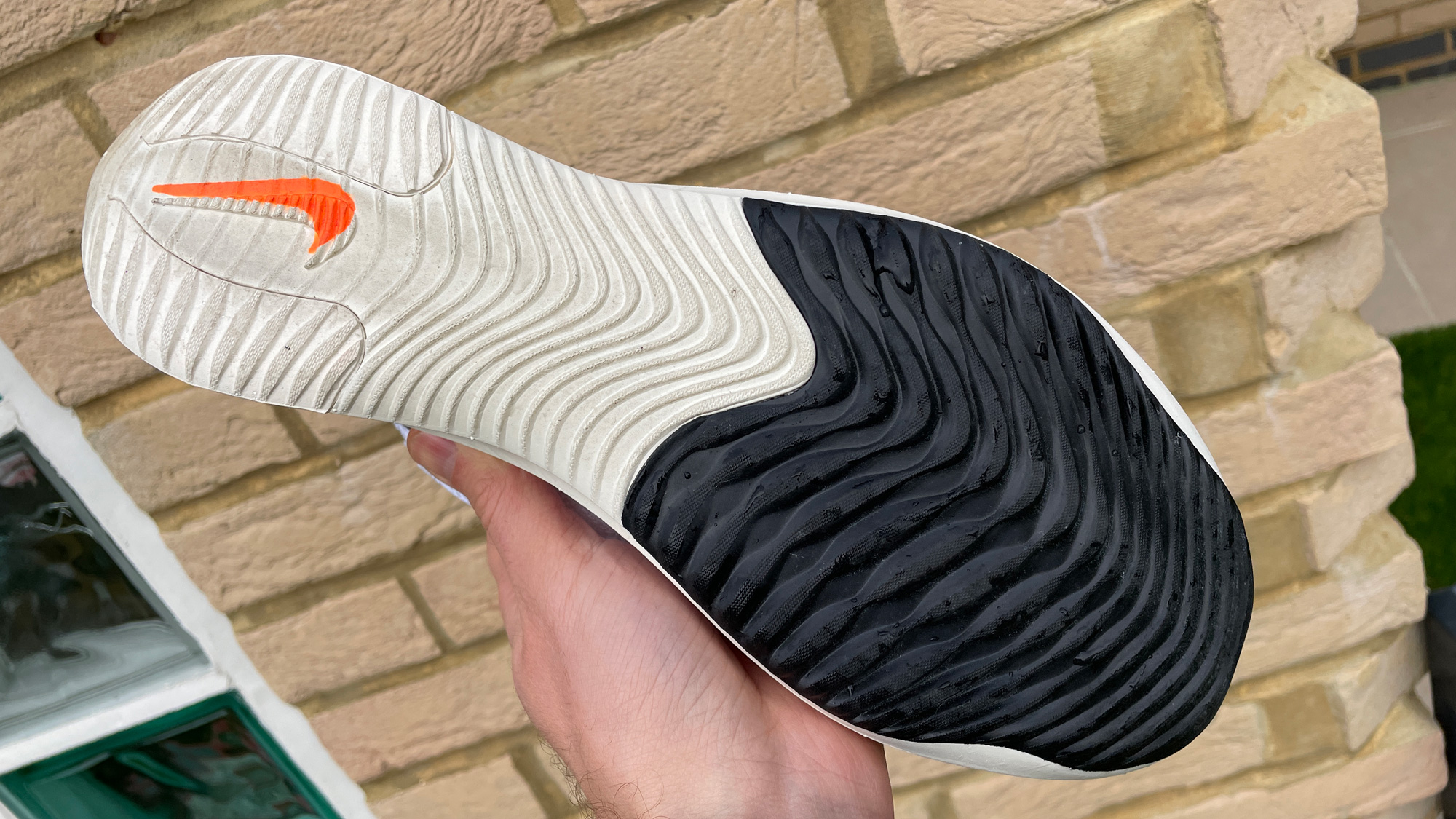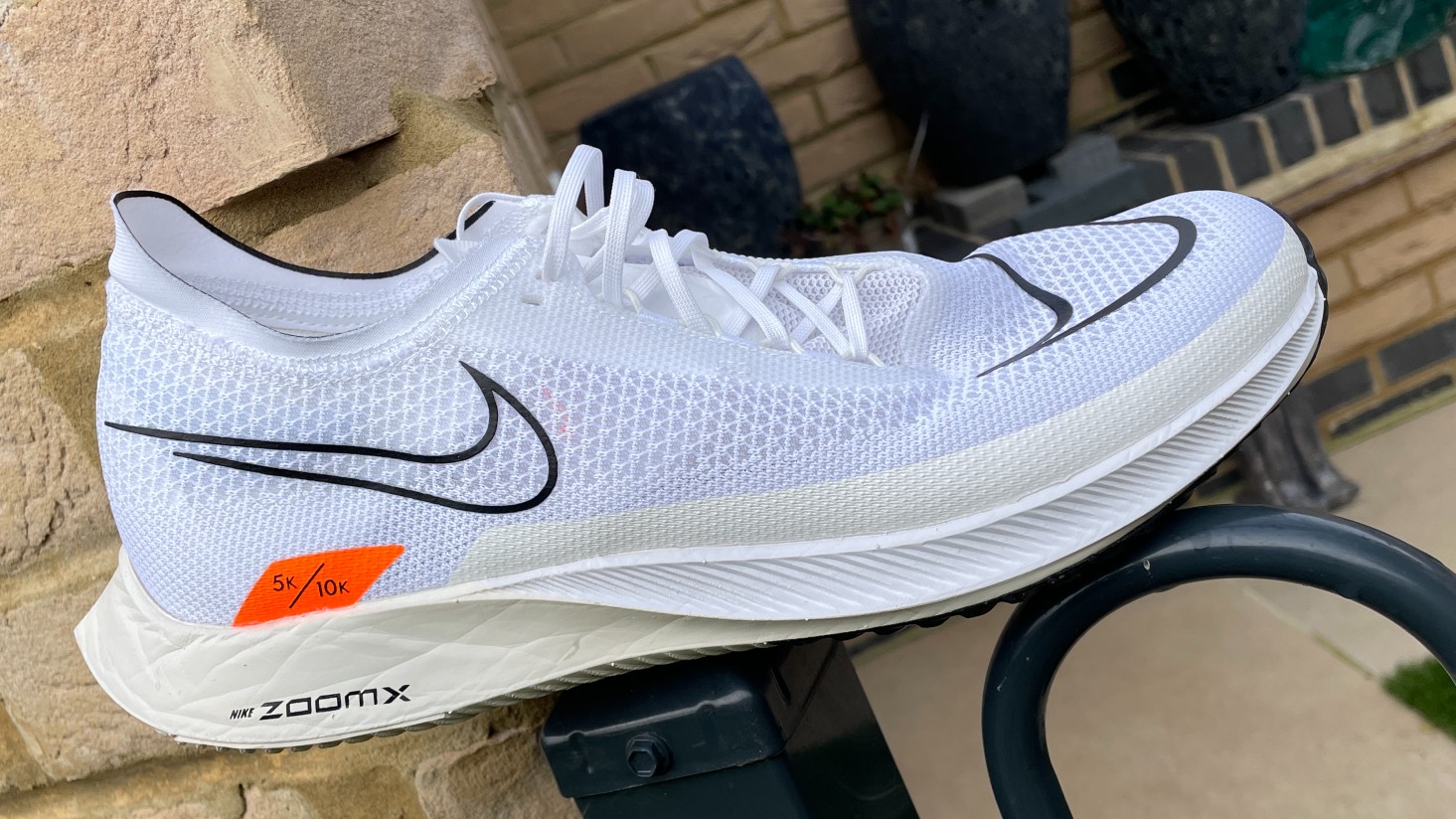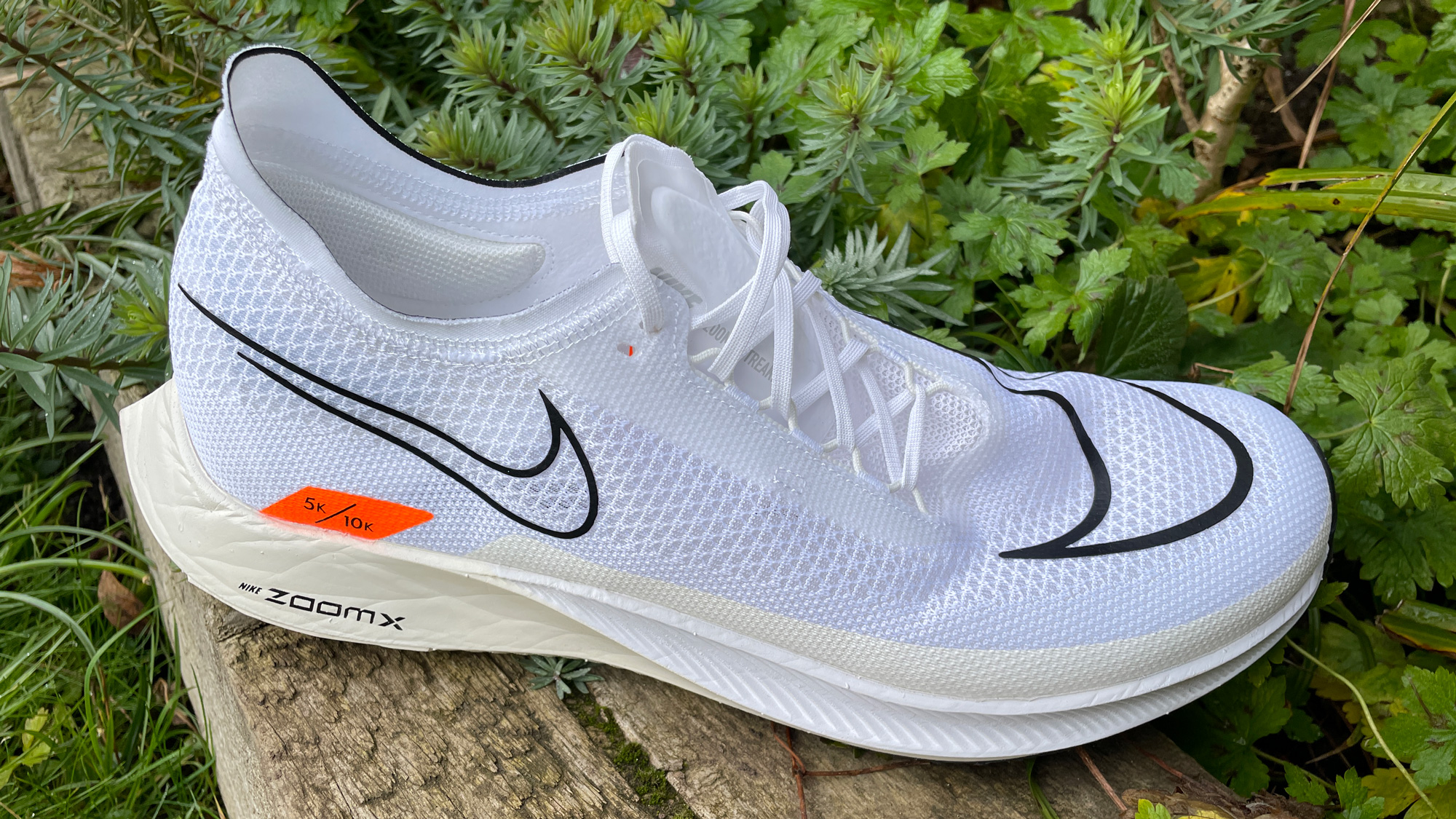Our Verdict
The Nike Streakfly is a fast shoe that’s fun to run in, and considerably cheaper than most carbon shoes, but it falls short of the performance and versatility of super-shoes like the Nike Vaporfly NEXT% 2 and Asics Metaspeed Sky.
For
- Very light
- Soft and springy ZoomX midsole
- Relatively good value
Against
- Lacks the propulsion of a carbon plate
- Suited only to shorter races
You can trust Coach
In just the past couple of years, high-stack shoes with carbon plates in the midsole have become the norm for runners tackling road races of any distance. This year, however, the landscape seems set to change again. There’s a new type of racing shoe, of which Nike’s ZoomX Streakfly is a shining example.
The stack height of the Streakfly is considerably less than the 40mm typical of super-shoes, and there’s no carbon plate in the midsole. It’s very light, and feels more stable as a result, which means it’s better suited to shorter events like 5Ks and 10Ks. However, while the Streakfly is fast and a great option for those races, I’d still choose the Nike Vaporfly or another carbon plate shoe.
Nike ZoomX Streakfly Price And Expected Release Date
The Nike Streakfly launched in a limited-edition “proto” colourway on 28th January in the UK, which cost £134.95 and sold out in short order. The full launch of the shoe is scheduled to be before the end of February.
The Streakfly is much cheaper than the Vaporfly and most carbon shoes, which tend to cost more than £200. It’s also cheaper than the Adidas Adizero Takumi Sen 8, another short-distance racing shoe that costs £170.
Nike ZoomX Streakfly Design

The Streakfly has a stack height of 32mm at the heel, which makes it much more cushioned than traditional racing flats. However, that’s well under the 40mm limit set by World Athletics, which carbon plate running shoes like the Nike Vaporfly NEXT% 2 bump up against.
The Streakfly does not have a carbon plate in the midsole: instead there is a Pebax shank in the midfoot to promote a snappy transition. The lower stack and lack of a plate mean that it is very light at 182g for my UK men’s 9 – pretty much all carbon shoes weigh more than 200g, and most more than 230g, in my size.
It still has a full ZoomX midsole made from the bouncy PEBA-based foam used in the Vaporfly and Alphafly, which is among the very best. The outsole is fairly minimalist to keep the weight down, and it has been designed to maintain traction when rounding corners at speed.
The shoe ran a little long in my normal size. I have a narrow foot and would go a half size down in the Streakfly myself, but if you have a wide foot then staying true to size is probably the best way to go.

How I Tested The Nike ZoomX Streakfly
I tested the Streakfly in two hard track sessions and a five-mile (8km) road race to see if it could meet or exceed the standards set by shoes like the Vaporfly in these types of training runs and shorter events. I also tested it back-to-back with the Adidas Takumi Sen 8 in one of the hard track sessions to see how the two compared. Finally, I used the Streakfly for a couple of easy runs to assess its versatility.
Running Performance
For the most part, the Streakfly has been a lot of fun to run in. I didn’t enjoy the spongy feel of it at slower paces, and quickly ruled it out as a versatile option, but once you do hit your straps, the shoe comes to life.
It’s at its best on shorter reps, and smashing out 200 or 400 metres was great. The ride is still soft, but the foam bounces you back and the fact the shoe is so light makes it easy to hit and hold a high cadence. It also grips well at fast paces, even on a slightly slick outdoor track.
On a longer 2km rep indoors that averaged out around my 5K pace, the Streakfly also performed well, and I was excited to try it out at a five-mile league race with my club around Victoria Park in London. It’s a flat, fast route and there’s always a good field of runners so it was a great chance for the Streakfly to shine.
I ran 26min 28sec for a five-mile PB. The Streakfly felt great at the start and end of the race in particular, the light design making it ideal for a sprint finish.
However, in the toughest part of the race, around five to seven kilometres, I couldn’t shake the feeling that it lacked the boost of a carbon shoe, which helps you tick along and hold a good pace as you begin to fall apart. I didn’t have a huge drop-off in pace in the Streakfly, but it feels like it takes more effort to drive into the shoe and get back the bounce from the soft foam and small plate.
To my mind, the Vaporfly and Asics Metaspeed Sky are more efficient options, even over 5K and 10K races. In fact, I think I probably went through five miles faster than 26min 28sec in the Metaspeed Sky when setting my 10K PB last year. Although I haven’t raced in it yet beyond a parkrun, I also prefer the firmer feel of the Adidas Takumi Sen 8 for short, fast running, with the EnergyRods in its forefoot adding a bit more snap to the ride than the Streakfly does.
Is The Nike Streakfly Worth It?

The Streakfly is an enjoyable shoe to run in, and it’s notable that all the shoes I’ve mentioned as being a tad more impressive are much more expensive. I can’t think of a better short-distance racing shoe for £135, but if you want the best performance possible I recommend spending the extra money for the Vaporfly or Metaspeed Sky. Bear in mind you get a great long-distance racing shoe for your money as well.
It’s probably true that much of the Streakfly’s target audience has a carbon racing shoe already. In which case, I don’t think it’s worth spending more money on another racer just for short distances. Nike, and others, really have nailed racing shoes with carbon super-shoes, and I don’t think the Streakfly improves on the winning formula of a bouncy foam with a full carbon plate.
However, if you are a short-distance racer who doesn’t like the high stacks and prices of super-shoes, the Streakfly is a great new option. It’s fun, fast and good value.

Nick Harris-Fry is a journalist who has been covering health and fitness since 2015. Nick is an avid runner, covering 70-110km a week, which gives him ample opportunity to test a wide range of running shoes and running gear. He is also the chief tester for fitness trackers and running watches, treadmills and exercise bikes, and workout headphones.

